Nerine Dorman's Blog, page 16
March 14, 2022
Wild Horses on the Salt by Anne Montgomery
Okay, so I have mixed feelings about Wild Horses on the Salt by Anne Montgomery. It was the blurb that appealed to me – I love stories about women who overcome adversity and find themselves after escaping a terrible situation. And this book has all the elements that I love – a strong ecological theme, wonderful attention to detail when it comes to describing the natural environment, and a cast of lovely supporting characters. And Montgomery is *almost* there in terms of pulling all the themes together, but it falls ever so slightly short of being a powerfully impactful story in terms of character development. I feel this book tries to do too much, and then doesn't quite hit the mark when it boils down to execution.
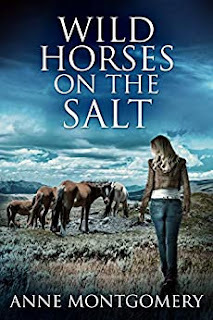
If there had been a firmer hand on the reins during the structural edits, these threads could have been tightened and developed better. As it stands, it feels as if the love interest is slightly tacked on, and Rebecca dealing with her abusive, erstwhile husband comes across rushed – the conclusion to this arc far too convenient and reeking of deus ex machina. Rebecca herself as a character, flounders along, not quite developing as a person to transcend her difficult past. What further marred the story for me was the occasional head hopping – not enough to make me want to put down the book, but enough for me to notice and get twitchy.
I feel that the author-narrator voice was not quite strong enough to present us with a credible omniscient viewpoint, so that the shifts, when they happen, feel ever so slightly jarring, and some of the dialogue falls into 'as you know, Bob' territory. When we read scenes from the point of view of animals, such as the stallion, the expression feels too much like a human explaining things about the animal, instead of immersing us in how it might feel to be the animal – that won't be using human terminology to explain things like roads or vehicles. Or maybe I'm just hankering after Elyne Mitchell's brumbies. (And if you've read those books, you'll understand what I mean.)
So, these were my quibbles. Wild Horses on the Salt makes up for it by offering a deep dive into the Arizona desert – and this Montgomery does well, clearly writing with immense love and passion for this beautiful environment and the threats it faces due to human encroachment. She foregrounds the plight of the wild horses, and humans' indifference or outright hostility to conservation efforts.
While the novel gets off to a promising start, I do feel as though the ending was dashed off somewhat, though this wasn't a complete dealbreaker – and a more rigorous bit of editing could also have helped, as the final offering was a little wobbly in places. However, if you're looking for an easy read and a bit of armchair travel, that will take you to a breathtaking destination, then this will be a pleaser.
March 12, 2022
How to disguise exposition
Every few months, I get invited to do a talk followed by a Q&A with a UK-based writers' group, so what follows are my notes that I've massaged into something of use for my readers. The main focus on this talk, was how to disguise exposition.

What is exposition?
Any moment the story is paused so that a history lesson is given in some shape or form, it's a stage where you need to be very careful. It slows down your pace, and if there's too much of it, readers might put the book down. Remember also that we're living in an age where there are maximum distractions all around us all the time.
The big problem:
I've lost count of how many first chapters I've read that had entire pages of back-story about a kingdom or a world. These days with Amazon's 'look inside' function, if you're not hooking readers from the start, Houston, we have a problem. Or I think of the SF writer I edited many years ago who had five pages of exposition discussing how the fusion drive on his space ship works. My eyes glazed over after the second paragraph, and I found myself skimming until he got back to the story. And of course there are the many times I've encountered chunks of info-dump right in the middle of an action-packed scene that threw me right out of the story.
My solutions:
So, how do you convey the vital information?
Dialogue is a great place, but be aware of falling into the trap of 'as you know, Bob' type dialogue that is clearly wedged in for readers' benefit. If it's information two characters both know, then find better ways to rehash it – perhaps characters have differing opinions that amount to an argument. And hey presto! You have not only a great opportunity for characterisation, but also for throwing in a bit of back story without making it yawn-worthy. Of course a prime example is when one character is a bit clueless, and the other is filling them in with something they don't already know.
Nesting narratives. Sometimes we can have a story within a story – so look at how a classic children's fairy tale is told, there's a beat and a rhythm to the telling. Look at what sort of imagery you can use, how you can make the language beautiful – especially consider the African narrative tradition where a 'telly' way of sharing a story actually does work quite well. Do yourself a favour and go see how masters such as Sir Terry Pratchett and Neil Gaiman handle exposition. They make it feel effortless.
Show from context. If you want to show that a country has been suffering a great war, perhaps consider a chapter that starts with a character in a conflict area. Allow the contextual information, for instance, lack of supplies, bad weather, leaders who are out of touch with the common soldier, create a strong impression of what is happening. Turn it into a easter egg hunt of sorts. What sort of clues can you drop into your story that will gradually build up layers of meaning? You want to show that a building has suffered in a long-ago war? Maybe the bullet holes are still there, but they're furred with lichen and moss – this tells us the conflict happened a long time ago and no one's bothered to fix it.
Show, don't tell...
You've probably gone cross-eyed from having heard this, but there's some truth to it. Create a vivid setting, and readers will learn from what you feed them as things progress. Look at Bilbo in the Shire, as an example. Or Luke Skywalker the farm boy embarking on his journey. The world gradually unfolds and the writer creates a mystery that keeps dragging readers forward. Resist the temptation to throw everything and the kitchen sink at readers right at the start!
Your character...
Your characters will have opinions – not always the correct ones, but even two characters disagreeing on the same topic will not only give you good information about the characters, but will also show you more about the world. Two things happen – you build the world, but you also gain the opportunity to develop your characters. Think about why a story featuring a clueless character (farm boy, small children climbing into a wardrobe, a hobbit embarking on an adventure with a band of thieving dwarves) – we learn about the world through their fresh eyes. But even a character who is jaded, who has seen it all, can have Opinions that will also paint a better picture.
Choose the right events!
Find events that are happening that are great opportunities to illustrate the mechanics of your world. There's a war brewing? What started the war? Was it a piece of land? Introduce a mystery that needs to be unpicked.

Help me, Obi-Wan Kenobi, you're my only hope.
Show the characters gathering more information as their adventure progresses – you don't need to reveal everything in one fell swoop.
Offer contextual clues
Don't explain why people would have to be at a destination at a particular time. Just show them arriving, infer that this is something they do often – perhaps because they've got stuff stored there. Paint a vivid picture with your environment and your characters. Once again, don't explain. Show from how people interact with each other and their environment.
For instance, instead of going on about the racism in a particular city, perhaps show a horrible man spitting at a beggar woman who belongs to a different culture. This tells us a lot not only about cultural tensions, but also long-standing issues.
You want to show how healthcare in a community works? Have a scene that makes sense within the story where a character gets hurt while problem solving, and has to go to see a healer or doctor.
A very fine line exists between too much and too little. And it takes a while to figure out the balance. Not all exposition is bad, IOW. But by the same measure you mustn't give it the steering wheel, so to speak.
If I have to think of novels that I struggled with, Frank Herbert's Dune springs immediately to mind. I stop/started it three times before I finally pushed through and finished. Herbert wades through so much internal monologues, back story – and the real problem is that even if you're going to write exposition, you need to be able to evoke images, tell a story that moves from A to Z.
Another one that grated my gears was Laurell K Hamilton's habit of describing a laundry list of everything from the hair down to the shoes. Every. Time. A new character comes onto a page. It becomes so obvious after about a few chapters that I eye-rolled so much, and if it weren't for the fact that I was writing the review for the papers, I probably would have stoped reading after the first three chapters.
Handling exposition in your writing is very much a case of practise and awareness. Fellow author David Miles mentioned a great exercise where he advises writers to delete all the parts with exposition in an excerpt to see how it reads, then only to reinsert the bits of exposition needed to motivate what's being said. This is a good practice. Don't be afraid to cut words. You can always put them back later, where they offer better context. Or you could shape them so that they're more fascinating to read.
If in doubt, spend time reading attentively, and see how the classic authors out there handle exposition, then experiment with your own writing.
March 10, 2022
The Poetic Edda: Stories of the Norse Gods and Heroes translated and narrated by Jackson Crawford
One of my favourite authors, JRR Tolkien, has a heavy debt to pay to the Old Norse Poetic and Prose Edda, which are writings that date back to the 13th century when Christian priests recorded the old poems. Considering that the ancients, for whom these poems were living, breathing cultural objects, had primarily an oral tradition, if these early scholars had not recorded the verses, they'd no doubt be lost in the mists of time. Thanks to their dedication, we have some ideas of the beliefs and culture of our Scandinavian ancestors. The irony of Christians preserving artefacts of Heathenry is not lost on me.
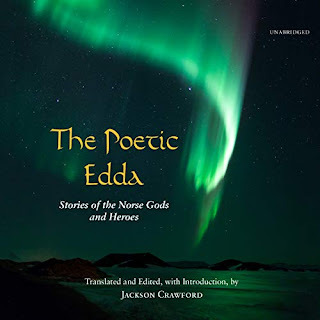
I will admit that The Poetic Edda: Stories of the Norse Gods and Heroes, translated and narrated by Jackson Crawford, is my first serious dip into the source material that has informed so many of my favourite TV series, films, and books. And while Neil Gaiman's Norse Mythology is still lurking in my TBR pile, I'm altogether keen to get to the actual source material before I take up Gaiman's book. When the time comes, it will be interesting to make comparisons.
What I enjoyed about Crawford's writing and narration is that not only does he have a lovely, melodious voice and exquisite pronunciation, but he also offers a little background information about each of the poems before he plunges into the reading that helps to establish context. I'll admit that I was initially somewhat hesitant, fearing that the verses would be dry. How wrong I was. Many of these myths are familiar to me, thanks to the many years that I've been delving into mythology, but with Crawford's telling, the stories came alive as close to the original source material as we can get.
Some of the sayings that were included I reckon are still relevant to this day, which is something indeed. Not that I'm about to go a-viking anytime soon. I'd love to know more Old Norse, because I suspect that not all the imagery and subtleties translate all that well into English, but I feel Crawford still did an excellent job with this work. I'll happily recommend the audiobook to anyone who wants to learn more about the philosophy, culture, and cosmology of the ancient Scandinavians, who in their fatalism (there's A LOT of death, treachery and bloodshed in this book) still managed to live their lives to the fullest. This title was included in my Audible subscription, and was worth every moment.
March 9, 2022
Palaces of Stone: Uncovering ancient southern African kingdoms by Mike Main & Tom Huffman
I've known about the existence of the iconic Great Zimbabwe ruins for years, but until Palaces of Stone by Mike Main and Tom Huffman arrived on my reading pile, I had no idea that the story behind these remnants of a culture were far more numerous and widespread – with 566 known sites described. Before the Europeans had the wherewithal to sail around the Cape of Storms, kingdoms existed in southern Africa with dwelling-places and palaces with such evocative names as Mapungubwe, Great Zimbabwe, Khami, and Zinjanja, among others.
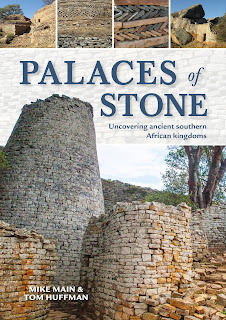
The first settlements date back to 900 CE to 1850 CE, with the last, the state of Mutapa, seeing the start of its demise with the arrival of the Portuguese in the1600s, whose meddling in local politics stirred a toxic brew of intrigue and conflict. Main and Huffman paint a picture of a series of states, each growing phoenix-like out of the ashes of the old, with complex cultural practices and a wide net of influence within the region.
We are fortunate that not all the research into the culture of the region is conjecture – much of the lore is still alive today, courtesy of the Shona people, and the authors offer up fascinating details behind the meticulously laid-out stonework, the arrangement of dwellings, and the roles played by their inhabitants. Even the patterns of the stones have their meanings – the chevron, check, and herringbone patterns each telling their own stories.
What troubled me was also my understanding of the great damage wreaked by the British, whose shameless treasure hunting in the Great Zimbabwe ruins destroyed any hope of piecing together accurate archaeological data. This disregard for an immense cultural heritage means that we have lost so much, and Cecil John Rhodes and his ilk have much to answer for.
Palaces of Stone might be a slim volume whose size cannot do justice to the beautiful photographs and detailed maps reproduced within, but for those who, like me, are fascinated by southern Africa's natural and cultural history, this is a veritable treasure trove of information. What I've learnt is that these walls are more than just tumbled ruins, but they echo with a vast reservoir of meaning and a vibrant past deserving of preservation and further research.
February 23, 2022
The Lucifer Principle by Howard Bloom, narrated by Malcolm Hillgartner
This isn't my first dance with Howard Bloom's The Lucifer Principle, and as always when revisiting a book, often the biggest change will be in the reader, and how they parse the content years down the road. This time, I picked up the audiobook masterfully narrated by Malcolm Hillgartner, and found myself sufficiently entertained.
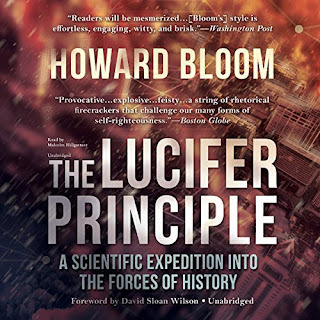
Despite the book's provocative title, there's really nothing at all 'evil' per se, but rather an exploration of what we might consider the negative aspects of our mammalian existence as being hardwired into our genes. Despite fancy clothes and a liking for technology, we're not at all that different from our great ape cousins.
Bloom wears his influences on his sleeve, and it's pretty clear from the get go that he's a big fan of Richard Dawkins, and although he's no Nobel-prize-winning scientist, his music publicist background has most certainly given him the gift of the gab – he writes persuasively on a broad range of topics, and he is a keen observer of human nature.
So, while you're not going to be sitting with a strict, non-fiction book, The Lucifer Principle is very much a thought-provoking read. One needn't agree with everything that the man says, but he does raise points about our behaviour that are topical and controversial.
While the idea that we form part of a giant 'superorganism' isn't a new one, Bloom does dig into how individuals function within society – touching on how important it is that we need to feel needed, and be part of the machine, so to speak. And we look at how we've shifted away from replication of genes to replication of memes, in terms of building communities.
If I'm entirely honest, the book is a bit of a hot mess, with a mish-mash of cherry-picked data mixed in with the author's hot takes – but it still makes for compelling reading, whether you think the man is a genius or that he's clearly smoking his socks.
If anything, this is is the sort of book you can use to pick topics for conversation starters at parties if you want to end up with a brawl and broken beer bottles. But that being said, if you take Bloom's writing with a huge dollop of salt, there is a grain of truth underlying much of what he says – but it's advisable for readers to use this as a springboard for further research and formation of their own opinions instead of relying on Bloom's broad, sweeping statements, as entertaining as they are.
I'd bet that Bloom is a great guy to invite over for a social gathering – it's abundantly evident that the man is in possession of a lively mind, even if the conclusions he draws can be a tad bit contentious.
My takeaway is that while this book is filled with interesting anecdotes, it also drives home the truth for me that we, as a species, can do better. We do not have to shackle ourselves to our genetic predispositions and outmoded, outdated societal mores.
February 1, 2022
No Longer Human by Osamu Dazai, illustrated by Junji Ito
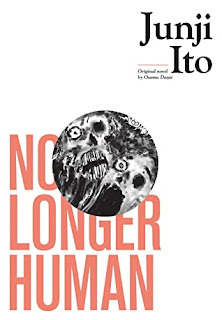
So, when the husband splurged out on a hardcover copy of Ito's adaption of Osamu Dazai's No Longer Human, I allowed that now would be the time I'd get over myself and actually read manga. This is quality stuff, apparently. I was not disappointed.
Look, I'm a complete pleb. My first difficulty was getting used to reading a book from the back to front, and to read from right to left. I won't lie, it was jarring at first, but I got used to it. No Longer Human is the story about Yozo Oba. As a boy, he suffers terrible anxiety about people's opinions about him – so he is always clowning around to gain their approval, until the day his friend Takeichi sees right through Yozo's tactics to win others' approval.
What follows is a dark plunge into dissolution and existential horror, as Yozo makes one poor decision after another – it's like watching a train wreck. I eventually could not put down this hefty tome until I'd reached the last, terrible sequence. As an aside, Dazai himself suffered a tragic ending, which is eerily prescient in the narrative of his writing.
I'll be honest, I know next to nothing about manga. Also, please don't recommend other books to me in the hopes that I will read them. I'm incredibly picky. Why I liked No Longer Human was the terrible authenticity of the telling and the unrelenting, crushing existential dread. My own life feels like cherry blossoms in comparison. Ito's art is clean and doesn't have that sameness that I've picked up in other manga that I've glanced at. In fact, the level of detail in those black and white strokes is absolutely staggering and rather hypnotic. We have a huge pile of his books here at home, and I expect at some point I'll dip into them when the mood fits.
Isle by Claire Robertson
Isle by Claire Robertson is one of those books that, even after much consideration, I find difficult to pigeonhole. And it's been preying on my mind awhile now, weeks after I have finished it. First off, it was the cover that got me – I admit I'm a sucker for striking covers. But also, in my mission to read more African writers, this was certainly intriguing when I cast an eye over the blurb.
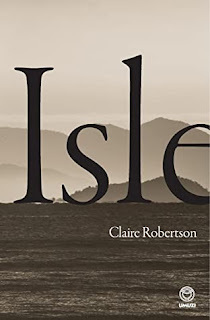
It's not a novel, but rather two novellas that have been glomped together, with the only real connection being that both take place on an island and feature the lives of women – though they are centuries apart.
I – Forth from this Place takes up the bulk of the offering, and is the tale of a community of women living on the Isle of St Katharine. They are not nuns, nor have they sworn an oath of celibacy, but they do live as a community of nuns would – cloistered and independent of the world of men. Yet their Magistra Lutgard is well aware of the fragility of the equilibrium their liminal space inhabits. She is anxious not to agitate the church or nearby community too much – for in her time witch hunts are not uncommon. It doesn't help that one of her women, Mechthild, is restless, striving to be more, do more. Find her own way in the world in a manner that is unconventional for its time.
None of this is helped when a Moorish peddler is rescued from a near-drowning, and serves as a muse for Mechthild in her artistic aspirations. She makes a book of hours, but instead of following conventions, her lifelike representations of the people around her surprise and astound those who are not accustomed to seeing representations of their faces laid down on paper. This act of hers has far-reaching consequences, not only for Mechthild, but for the lives her work touches.
II – Uxo brings us to a post-WWII setting where Lily Kinsella, who is higher-ranking than her fellow officer, John Burge, are tasked to recover or destroy old ordnance. Yet from the start, it is clear that all is not well with Lily, nor her relationship with Burge. Their work takes them to remote places, and it's clear this unbalanced relationship between the two, carries equal parts resentment and reverence on Burge's part in the face of Lily's seeming indifference to him.
Their travels bring them to an unnamed island that serves as a penitentiary, where Lily's interactions with teenage Iris and her prison warden father stir trouble, and eventually bring the issues between Lily and Burge to a head. Part coming-of-age story, part remembering of a shrouded past, this novella offers readers a careful dance between withholding and revealing in a way that exposes the fragility of human lives in all their ugliness and beauty.
Neither of these novellas comes to a head in a way that is satisfying – but then again, it's not for an ending or great denouement that one would read, but rather the savouring of each line of prose that is so exquisitely crafted that it is liquid poetry. And that's all I'll say on the matter. See for yourself.
January 31, 2022
The Armored Saint (The Sacred Throne #1) by Myke Cole
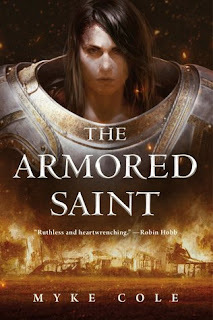
The Armored Saint by Myke Cole is the first in a trilogy of stories, and I will say this much: I was drawn right into the world. Cole likes to take your preconceptions, turn them on their head, and then when he lulls you into a false sense of hope, he pulls the metaphorical rug from under your feet. Heloise as a protagonist is earnest yet awkward and her mistakes and missteps only add to the greater unfolding disaster.
She and her community face real horrors, where a religious authority holds great sway over their lives so that ordinary, good people are often coerced into doing bad things in the name of good – and Heloise questions the way things are done, and the outcomes of her doubt are not always to her advantage.
That which, at first, seems fair may be foul, and that which is foul may really be a last bastion of hope against the forces of evil – and ignorance of the way things actually as opposed to how one may wish them to be are may well prove deadly. There is a lesson here.
As far as fantasy novellas go, this one gripped me from the start, and the next book in the trilogy is an insta-buy for me. If you like your fantasy gritty and demon-haunted, then look no further than this offering.
January 27, 2022
Gobbolino the Witch's Cat (Gobbolino #1) by Ursula Moray Williams
Gobbolino's tale first came to life for me when I was six, when my mom and dad invested in the Storyteller books with their cassettes for me – so this was my very first introduction to reading: an abridged version of Ursula Moray Williams' children's classic, Gobbolino the Witch's Cat. I've always wanted to go back at some point and revisit the source material, and while picking up a copy here in South Africa is tricky, Open Library nevertheless came to the rescue – a great resource for anyone looking for hard-to-find, out-of-print editions of books. I have no problem reading on screen, and the nice thing with Open Library is that you can enlarge the print quite comfortably.
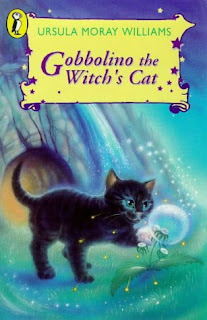
This is very much the sort of book that benefits from being read aloud at bedtime. The chapters are short and contained, and they follow Gobbolino's misadventures as he seeks to distance himself from the evil of his upbringing as a witch's kitten to his rather lofty ambition of becoming a kitchen cat. Now, many years later, this sort of witches and magic = bad is a bit simplistic for me, especially in the light of so many stories where witches and wizards feature who are not evil. But it is what it is is, and Gobbolino is a little anthropomorphised kitty who talks, minds the kitchen and talks to children. Don't overthink things. Williams's moralising also annoyed me somewhat as an adult, but once again, I don't think this sort of thinking might bother smaller children.
We see Gobbolino try his luck as a ship's cat, a mayor's cat, a knight's cat, a cat attached to travelling performers – and all the while his heritage and abilities as a witch's cat hold him back or cause trouble for him when he tries to do good. Because he is a good kitty, and he wants to please.
If you do lay hands on a copy of this book, read it out loud to your littlies. Try to do all the voices and have fun with the story – because that's what it is. A lovely little redemption arc for a kitten who couldn't help the accident of his birth. But I'm firmly Team Sootica. So there. Meow.
January 17, 2022
The Face of Battle by John Keegan
One thing I do a lot of these days is listen to audiobooks on subjects that will broaden my horizons as an author. And not only that, since I edit professionally where military situations often crop up, so it's important that I Know All The Things when it comes to the smaller details – like battle. The Face of Battle by John Keegan was included in my Audible subscription, and it was a no-brainer for me to pick it up. It helps, also, that the narrator, Simon Vance, has a wonderful voice. I'm now putting more works that he's read on my TBR list purely because I like him so much.
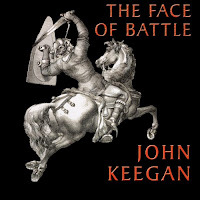
Keegan's writing takes a little time to get into, but once I got past the introduction, I was accustomed to his diction and the subject matter. The Face of Battle looks primarily at how the experience of battle was for the average soldier – a reality often overlooked or glossed over in historical accounts that tend to glomp together combatants' experiences as if the armies were singular entities rather than units made up of individuals.
How we, as human beings, face the trauma and tribulations of battle and extended warfare, is an undeniably complex subject. How we do battle, too, has changed profoundly over the years, as Keegan explains. While the topic of warfare over the centuries is certainly broad, Keegan picked three famous battles in which he showcased the changes: that being Agincourt (1415 CE); Waterloo (1815 CE); and the Somme (1916 CE).
Once thing that is clear, is that our ways of killing our fellow humans have gone from the personal – featuring one-on-one conflict using blades – to the impersonal, involving ranged artillery bombardment that often lasts for months. How we write about these battles and history matters, for if we lose sight of how things are for the man on the ground, it's far too easy to embellish and gloss over the sheer weight of human misery. Issues such as supply lines, lack of communication, and dealing with injuries are just as important to consider as strategy and final outcomes. We see how commanders were once hands on, moving from site to site in order to maintain efforts, to the fact that those in charge often never set foot at the front – directing troop movements remotely.
Keegan does well to illustrate the often fraught situations combatants find themselves in, giving a deep dive into the conditions in which many brave and often terrified men perished. I'd recommend this classic to anyone who is fascinated by military history or who wishes to gain a broad idea of how battles are enacted – and this is an important resource, I feel, for those who are looking at writing historical or military fiction.



